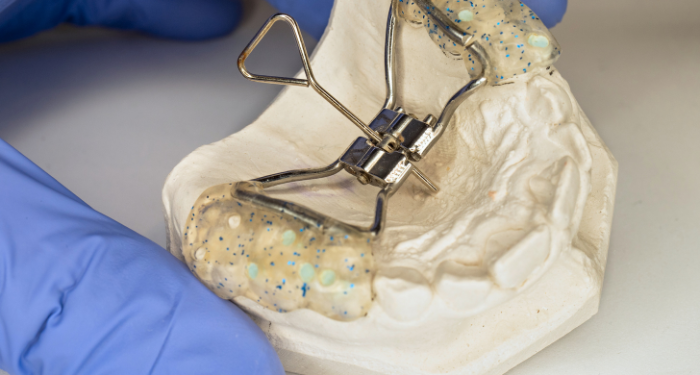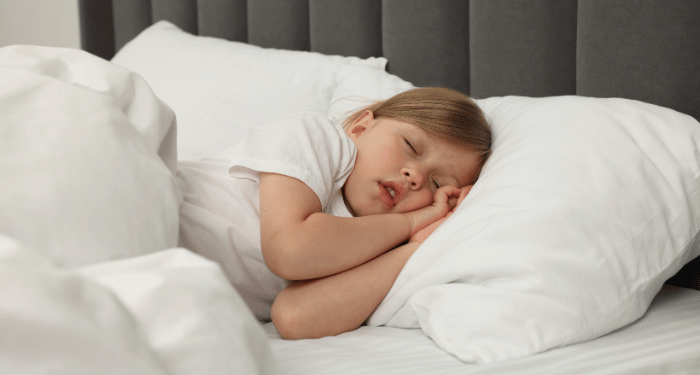
You’ve heard the name. Maybe you’ve skimmed an article, sat in on a webinar, or even referred a client or two for it. But when it comes down to it…what is myofunctional therapy, really?
At its core, myofunctional therapy retrains the muscles of the mouth, tongue, and face to work the way they’re designed to. The goals are to help us speak clearly, chew and swallow safely, support healthy teeth and jaw growth, and even improve breathing, sleep, and overall wellness.
A Little History (That might surprise you)
Think this is a hot new wellness trend? Think again.
Back in 1906, Dr. Alfred P. Rogers was already developing corrective exercises to improve muscle tone and oral function. Instagram reels might be new, but the roots of orofacial myofunctional therapy go back more than a century.
Who Is Myofunctional Therapy For?
It’s not just for “speech kids” or orthodontic patients. Anyone age 4 and up (cognitively) with an orofacial myofunctional disorder (OMD) can benefit.
If these “red flags” sound familiar, it’s worth a closer look:
Breathing & Airway:
- Mouth breathing
- Sleep disordered breathing and snoring
Oral Rest & Habits:
- Abnormal oral rest posture
- Drooling
- Thumb sucking, pacifier use, or frequent mouth of objects
Feeding & Speech:
- Picky eating
- Atypical swallow pattern
- Tongue Thrust (parents, you may hear a lingering lisp)
- Articulation issues that just wont resolve
Structure & Posture
- Tongue tie or lip tie
- High, narrow palate
- Forward head posture or chronic neck pain
- Recurring migraines
When the oral and facial muscles aren’t doing their jobs, the ripple effects can show up everywhere from speech to sleep to skeletal growth. It may explain why that client with articulation goals that don’t progress is still on your caseload years later.
The Big Goals
We keep it simple but powerful:
- Tongue resting gently on the palate
- Lips closed at rest
- Teeth slightly apart
- Breathing through the nose
- Proper bolus prep and swallow
- Elimination of noxious oral habits (thumb sucking, pacifier use, mouthing objects, etc.)
- No more tongue thrust
When these goals are met, everything else, from speech clarity to airway health, starts to fall into place.
How It Works: A 3-Step Care Pathway
Myofunctional therapy doesn’t have to feel overwhelming. Think of it as a straightforward 3-step journey:
Step 1: Identify
Through screening and assessment, we spot the signs of an OMD and connect the dots with the client’s bigger picture: speech, feeding, airway, posture, and more.
Step 2: Correct
Targeted exercises and strategies retrain oral and facial muscles, establish healthy oral rest posture, and support functional breathing and swallowing.
Step 3: Integrate
New habits are reinforced and carried over into daily life. We collaborate with dentists, orthodontists, ENTs, or other professionals to create lasting change.
Why This Matters (And Why You Might Love It)
Here’s the truth: myofunctional therapy is a game-changer.
Not just for the clients who finally find relief from chronic issues, but for clinicians who feel that spark of “This is what I was meant to do.”
I’ll be honest.Therapy didn’t lighten me up this way until I discovered the missing piece. Suddenly, those “hard cases” started making progress. It felt like someone had flipped on the light switch.
If you’ve ever felt like there was a missing puzzle piece in your therapy sessions, this might just be it.
Ready to Learn More?
Want case-specific guidance? Join The Myo Membership® for live office hours + HallieAI—your 24/7 myofunctional therapy mentor.
A Glimpse Into the Future
Emerging research is exploring how myofunctional therapy may even support better athletic performance and improved CPAP compliance. This field is only getting more exciting.


